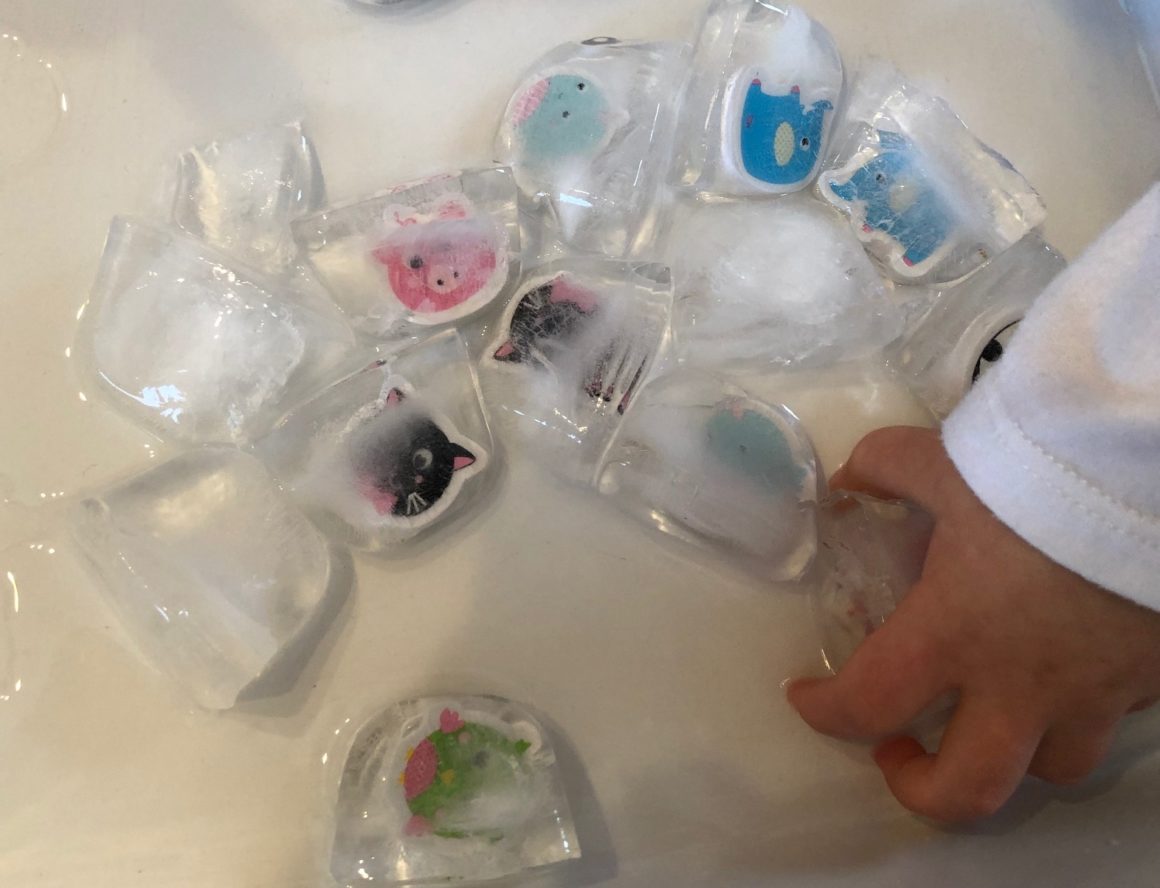
Using Ice Cube Activities for Early Language Learning
My toddler has been doing ice cube activities inside since it’s still cold here, but I can’t wait till summer to try this outside! Since I introduced this activity about two weeks ago, she asks for “Ice Animals” every single day.
I love taking a sensory play idea, like ice sensory play for toddlers, and adding other early learning ideas to the activity. As a Speech-Language Pathologist, I’m always looking for ways to add a language development angle to any activity and this one didn’t disappoint!
RELATED: Grab these Song Choice Cards from my Etsy shop!
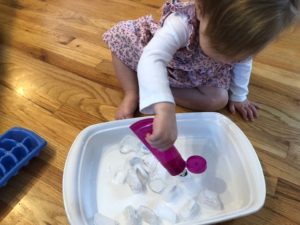
Sensory Play for Toddlers with Ice Cube Activities
The contrast of temperatures is the central idea for this sensory bin idea – the ice is cold and I paired it with warm water in squirt bottles. If you were doing this in the summer, you might not even need the warm water!
She got to work on pouring, squirting and trying to grab slippery ice cubes. The first few times she did this activity, we did it as an interactive-play, learning activity, but now she plays with it independently while I work on other kitchen tasks. Just be sure to put down a towel to keep the floor dry!
RELATED: Grab these Song Choice Cards from my Etsy shop!
*This post contains affiliate links, which means we could receive a commission if you click a link and purchase something that we have recommended.
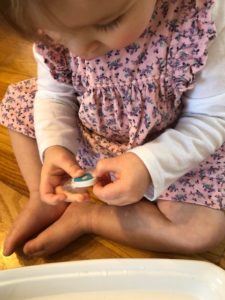
Supplies for an Ice Sensory Bin Activity for Toddlers
- Items small enough to freeze in the ice tray. Try to pick items that target vocabulary you are working on. For this activity, I chose animal erasers (there are two of each type of animal, so it’s also perfect for matching!) *Please supervise your child if she puts items in her mouth – items this size are a choking hazard.
Here’s some more eraser options – click on the picture to see the price from Amazon.com (but FYI i found mine at the Dollar Store!):



- A bin or pan with high sides
- A towel (I didn’t use one in these pictures, but I was sitting right next to her. In subsequent play sessions where she plays more independently, I always have her help me set up the area with a towel, pan, squirt bottles, etc.
Optional Add-ons:
- A bowl of salt and a spoon (for melting the ice)
- Fine Motor Tools like these:

How to Set-Up the Ice Cube Activity
Sylvie was really excited about making the ice cubes the first time, so I was glad that I had included her in the process. (Of course that also meant that she wanted to “check” on the ice to see if it was frozen about 10 times that evening!)
- Have your toddler help you put the items in the ice cube tray. This is a great time to preview the vocabulary of what you are freezing.
The form you have selected does not exist.
- Fill up the tray with water. I just had Sylvie watch me fill the tray and talk about when each cube was “full.” If you want to put some water in a squirt bottle or a measuring cup and have your toddler pour it in, that’s one more way to incorporate water play and fine motor skills
- Put the tray(s) in the freezer.
- Let you toddler check on them and touch the surface. You can incorporate language development by modeling that it’s “not frozen,” it still “feels wet.” And once, it’s frozen you can model that it “is frozen” and it’s “hard ice.”
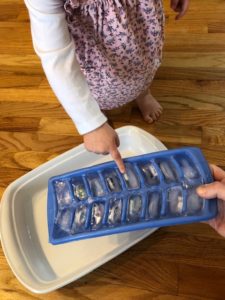
- Dump the ice into your bin/pan.
- Put warm water in your squirt bottles.
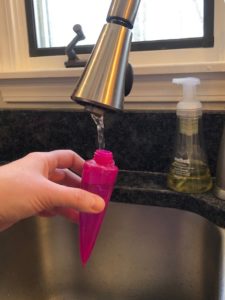
- Put out any other tools you think your child might like. We tried a spoon and tongs, but she mostly enjoyed using her hands!
That’s it – easy peasy!
RELATED: Grab these Song Choice Cards from my Etsy shop!
Early Language Learning with Ice Cube Activities
1. Communication for the basics:
- Target words/communication: more, help
- Example: When your child needs help with the activity (maybe getting an eraser out of ice cube), prompt him to ask for “help” either with his words (“Say, ‘Help’”) or with sign language. You can search for words using this video sign language dictionary.

2. Talk about how things feel:
- Vocabulary: cold, warm, slippery
- Example: “Oooh, the ice feels cold!” “Oops, ice is slippery!”
3. Learn target vocabulary from frozen items:
- We used animals, but you can freeze anything!
4. Expand on target vocabulary
- My daughter knew most of the animals, so we also worked on colors, animal sounds and combining two words (e.g. “blue elephant” or “two cats”)
5. Matching or sorting:
- Our eraser pack came with two of each animal, so we were able to do a matching activity.
- You could also sort by color, animal type or for older kids by habitat (land, water, sky)
RELATED: Practice Vocabulary with these Printable Sorting Mats in my Etsy Shop!
I hope your little one enjoys this activity as much as we did! What type of sensory activities your child like to do? Please share your favorite activity below in the comments!
Pin It for Later!
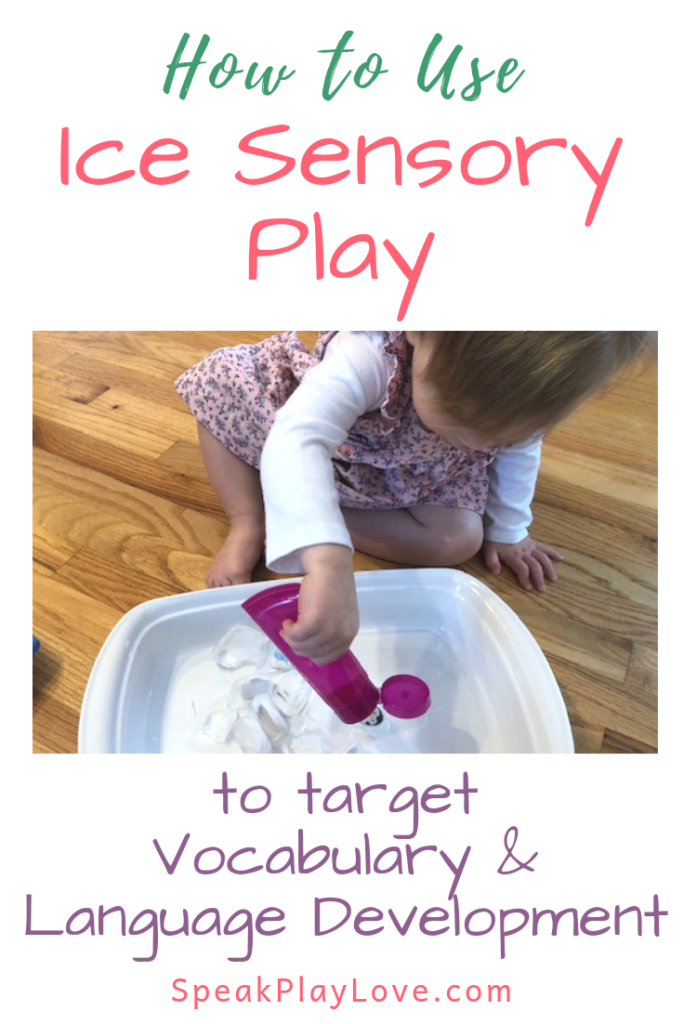
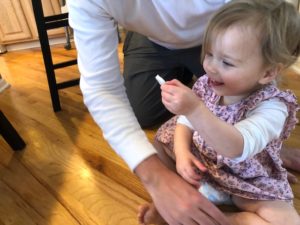
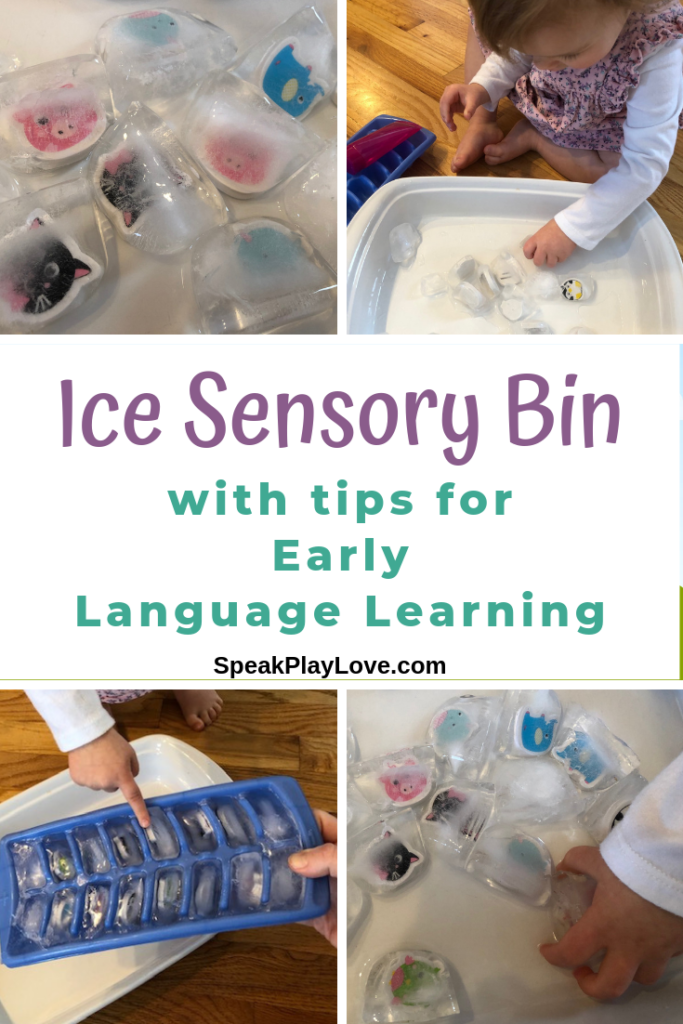


One Comment
Pingback: